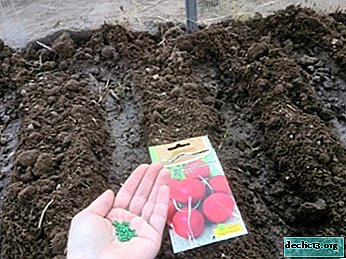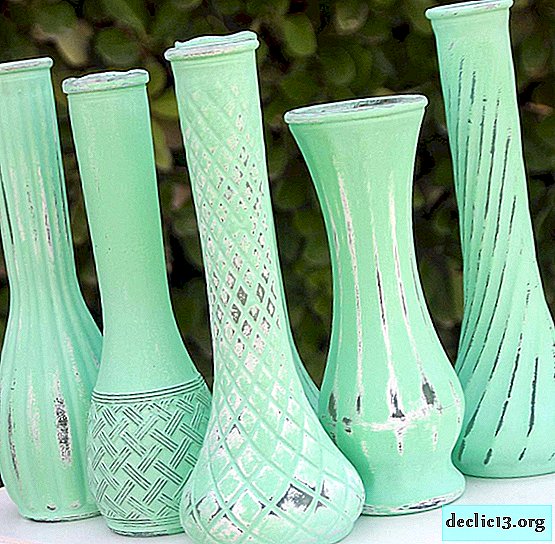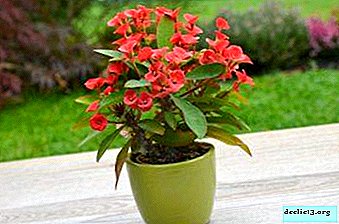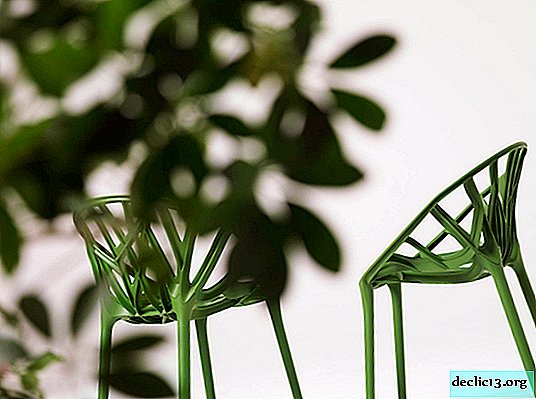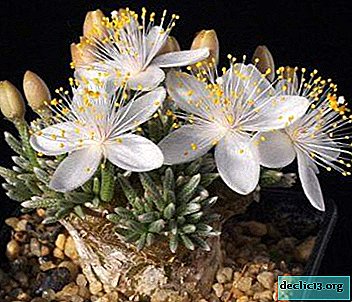Why do spathiphyllum fade leaves and how to help him?
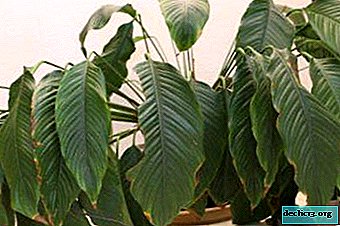
Spathiphyllum is a perennial evergreen plant with oval leaves with a pronounced middle vein from the Aroid family. Recently, it has been grown at home, and is often faced with a problem: leaves of the spathiphyllum wither.
In the article, we will consider such questions: why does the green mass dry, is it possible to save the plant, and what should be done first? And also consider how to properly care for a flower in order to prevent a recurrence of the problem and its death.
What is wilting?
Should I panic when I see oppressed and drooping plants? Wilting is a disease characterized by the drooping of various organs in a plant. It suffers from the loss of turgor. Turgor is a term coined by physiologists to explain the state of tissue fluid.
Appearance
The diseased plant has wilted and drooping leaves. Depending on the stage of the disease and the reasons that led to it, spots on the leaves may appear, and mold may cover the topsoil in the pot.
Important! In order not to miss the wilting of leaves, inspect the plants on the windowsill at least once a week.Why is this happening?
Because of what there may be drooping leaves in spathiphyllum:
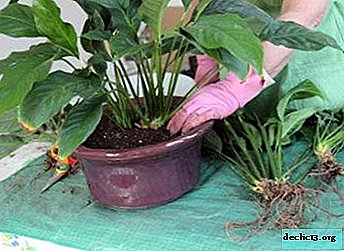 Stress after transplantation. You can not water abundantly and fertilize the plant until it gets used to the new conditions.
Stress after transplantation. You can not water abundantly and fertilize the plant until it gets used to the new conditions.- Overdry. The grower incorrectly organized watering the flower.
- Sudden changes in conditions of detention. In winter, the window does not open wide, and in summer they do not leave it without dimming on the balcony under the hot rays of the sun.
- Overflow. Due to the abundance of moisture, the water balance between the leaves and roots is disturbed, and the soil water ceases to evaporate.
- Excess fertilizer.
- Pests hiding under a leaf plate are noticed too late, when the spathiphyllum can no longer be saved.
Effects
Experienced flower growers save wilted plants by taking the necessary measures on time, and not allowing strong wilting of the leaves. Having missed the first signs, it remains only to throw the pot with it into the garbage container.
Step-by-step instruction
Noticing signs of withering of the spathiphyllum, it is necessary to act immediately. How to save a flower if the leaves wilted?
What to do?
Noticing two or three wilted leaves and without establishing the truth of the cause of what happened, the flower grower will not save the spathiphyllum. More often wilting causes a lack of watering for 7-10 days. Even if the reason is obvious, before watering it, you need to inspect the leaves and soil.
- Uneven soil moisture. If a flower is planted in the soil on the basis of peat, they are regularly taken care of, and the leaves are still wilted, then they change the watering technique. Watering from the top is stopped, and they switch to submersible watering for 10-20 minutes. This is the only way to provide good soil moisture, both above and below in a pot.
Note! Spathiphyllum should not be transplanted into non-hygroscopic soil. He will die even if the grower practices submersible irrigation.
- Withering after transplantation. To prevent leaf wilting after transplanting, do not water it heavily. Spathiphyllum is sprayed with Zircon solution. Four drops of the drug are diluted in a liter of water, and the plant is sprayed with the resulting solution once every two days in the evenings. Zircon is an anti-stress substance and an immunomodulator in one bottle.
If there is no Zircon at hand, after transplanting, cover the plant with a transparent bag so that the soil in the pot is always wet. After a couple of days they remove it.
 Lack of watering. If the plant wilted due to the fact that the grower did not water it for a long time, then the first watering should be not abundant. Watering with half of the usual volume of water will be sufficient, after which it is necessary to cover the plant with a transparent bag. The next time, it is watered after 1-2 days with the same volume of water. Such precautions help restore the root system and prevent severe wilting and yellowing of the leaves.
Lack of watering. If the plant wilted due to the fact that the grower did not water it for a long time, then the first watering should be not abundant. Watering with half of the usual volume of water will be sufficient, after which it is necessary to cover the plant with a transparent bag. The next time, it is watered after 1-2 days with the same volume of water. Such precautions help restore the root system and prevent severe wilting and yellowing of the leaves.- Subcooling. If part of the leaves wilted and looks like lifeless lashes, spathiphyllum was frozen. If not all the roots have died, the healthy are left and treated with Epin solution. If there are no healthy ones, they throw the flower away.
- Excessive watering. To restore water balance during overflow, excess moisture is collected by well-absorbing paper towels. They are laid on the ground, on the leaves and under the pot. As soon as the paper absorbs moisture, remove them and put new ones until they are completely dry.
- Excess fertilizer. Leaves may be sluggish - why? Due to excess fertilizer in the ground. Fertilizing is not done until the plant recovers and builds up a new leaf mass.
The reason is illness
- If the leaves of the spathiphyllum wilted, and the grower watered it with insufficient or excess water, then the aphid is the cause of his illness. To cure it, they process the flower 1-2 times a week with a weak solution of potassium permanganate.
- When leaves lose their brightness and wilt without visible damage, root rot is found in spathiphyllum. In this case, transplantation and treatment of the roots with Gliocladin helps.
- Due to gummosis, the leaves also wither, and blacken from the edges. Affected leaves are removed, and the remaining ones are washed with laundry soap with obligatory rinsing with water at room temperature.
You can learn about diseases of spathiphyllum here, and this article talks about diseases of plant leaves and how to treat them.
Damage to all foliage
The reason for this phenomenon is rotting of the roots. It is obvious if the grower has not watered it for a long time, and the earth in the pot has not dried out.
Important! When watering a flower in this condition, the leaves, especially the lower ones, will wither with a vengeance, which is why it should be watered gently and moderately.Rotting roots do not absorb moisture from the soil, and the flower suffers without getting nutrients and water.
If all the roots have not disappeared, the transplant will help:
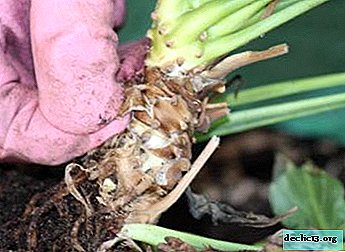 Spathiphyllum is removed from wet soil and inspected by roots.
Spathiphyllum is removed from wet soil and inspected by roots.- The roots are washed in a bucket of water, and not under the tap. This will free them from clumps of old earth and simplify the determination of healthy and dead roots.
- After washing, rotten roots are cut to a healthy tissue, and sections are dusted with cinnamon or crushed activated carbon.
- For 2-3 hours, the plant is not touched so that the wet roots dry out well.
- While the roots are drying, prepare a pot of new earth. They take the pot that was, and completely change the earth. New soil should be light. An activated carbon tablet is added to it to prevent rotting of the slices.
The ideal composition of the soil for female happiness: sheet land, peat, coarse sand, charcoal, humus.
- A layer of drainage is laid at the bottom of the pot. It is needed so that water does not stagnate in the lower part of the pot.
- In the bottom of the pot drainage holes are made if they were absent before. The soil is slightly moistened with water.
- After the third hour, the flower is transplanted into a pot with new soil, slightly moistened with water. Watering is not needed.
- After 2-3 days, spathiphyllum is watered for the first time with warm, settled boiled water with the addition of Kornevin to stimulate the formation of new roots.
Prevention
Repeated withering of the spathiphyllum can be fatal, and therefore it is necessary to inspect it once a week and take it as a rule: watering should be plentiful, but not frequent.
How to continue to care for the plant?
After treatment, care for spathiphyllum with extreme caution:
- Maintain constantly the necessary level of humidity. The soil should be moist always, but not wet.
- Along with watering every 2-3 days in the winter and every day in the summer they spray it.
- The flower is protected from direct sunlight, make sure that the temperature in the spring-summer period does not rise above + 26 ° C, and in winter - does not fall below + 16 ° C.
Conclusion
Spathiphyllum leaves wilt - a consequence of improper untimely or abundant watering. To avoid the problem, they monitor how it reacts to moisture. Noticing withered leaves, immediately act. Otherwise, it is difficult to save him.

 Stress after transplantation. You can not water abundantly and fertilize the plant until it gets used to the new conditions.
Stress after transplantation. You can not water abundantly and fertilize the plant until it gets used to the new conditions. Lack of watering. If the plant wilted due to the fact that the grower did not water it for a long time, then the first watering should be not abundant. Watering with half of the usual volume of water will be sufficient, after which it is necessary to cover the plant with a transparent bag. The next time, it is watered after 1-2 days with the same volume of water. Such precautions help restore the root system and prevent severe wilting and yellowing of the leaves.
Lack of watering. If the plant wilted due to the fact that the grower did not water it for a long time, then the first watering should be not abundant. Watering with half of the usual volume of water will be sufficient, after which it is necessary to cover the plant with a transparent bag. The next time, it is watered after 1-2 days with the same volume of water. Such precautions help restore the root system and prevent severe wilting and yellowing of the leaves. Spathiphyllum is removed from wet soil and inspected by roots.
Spathiphyllum is removed from wet soil and inspected by roots.


